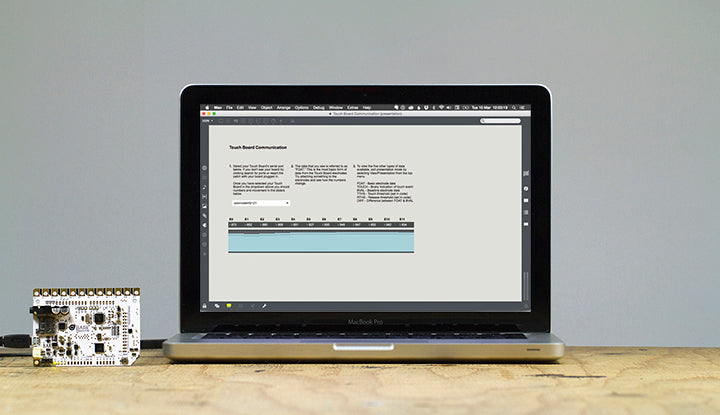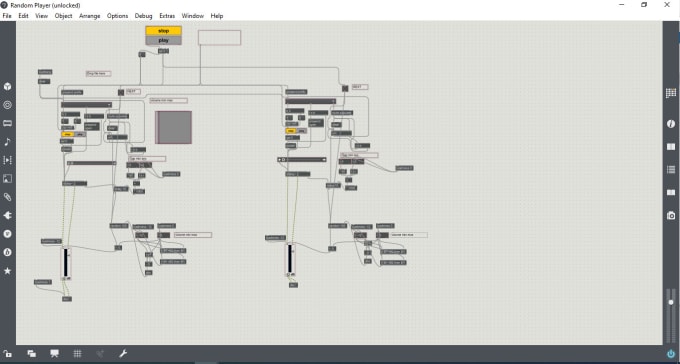

you use several and sum/mix their outputs: you could make this sum inside a unique (that could have several inputs if you need). you chain objects (the output of the first enters the input of the next.): you would rather chain the processes inside a unique you feed the same input to several objects: it would probably be more efficient to make a with 1 input, and maybe several outputs if you need them Whether in Max/MSP or not, traveling between time domain and spectral domain is an expensive trip. This is the formulas 10 and 11 in the article (tricky because when you freeze a third frame, you want to have 33% of each).įormulas 12 and 13 are a variation that you should ignore in a first step. Note that this is a simple matrix operation in Jitter. Then, to add an E, you would put into the new matrix something like (50% of the C that is currently frozen + 50% of this new coming E).


#Jitter max msp Patch
The idea is to extend the "freeze" patch in a simple way: instead of replacing the matrix with the new 8 frames, replace it with a mix of the old and new frames.įor instance, you freeze 8 frames from the spectrum of an instrument playing a C. The technique I describe in the article consists in having just one. Spectral Sound Processing with Graphical Interaction.

2019)īy the way, here is Petsi Pies in Cambridge, a coffee-shop in which I spent time writing this article: Here are completely revamped Spectral Freeze Max MSP Jitter patches (link updated Nov. I'm in the process of updating the relevant Max patches. Note: the cycling74 share pages have been discontinued. For a hands-on approach, make sure you download the patches on my cycling74 share page. Copyright and ownership information is included in the Info panel associated with each module. You can readily apply the described techniques in the development environment Max/MSP/Jitter. PAL Library require Max/MSP 6.0 or higher.
#Jitter max msp for free
The great news is that you can download the article for free on the page of the Computer Music Journal, Issue 32, Volume 3. If you are interested in graphical sound synthesis, phase vocoder, and sonograms (or spectrograms), I hope you will enjoy this tutorial. Sound stream, performance-time treatments are transformations of sound files that are generated during a performance). Now, the Computer Music Journal just published an article I wrote about spectral sound processing in real time and performance time ( whereas real-time treatments are applied on a live Hans Tutschku taught the wonders of AudioSculpt in Avignon, before Benjamin Thigpen taught Max/MSP in Helsinki.
#Jitter max msp software
I have dressed up here a series of works using this software that could be of interest for others.When I discovered electronic music during the Centre Acanthes 2000/Ircam, my favorite topic was real time sound processing in frequency domain. Jitter objects: objects dedicated to real-time Video Processing. MSP objects: objects dedicated to real-time Digital Sound Processing Max objects: general objects for display and control of basic alorithms (e.g. THere are 3 main types of objects that can be exploited: Max is a GUI that is somehow similar to Labview in the sense that it baically enable to display and connect a large variety of Input/ouput boxes.
#Jitter max msp license
I had the chance to get a student license for around 200 euros while I was a PhD student in 2006 and since then I had to pay for 2 minor upgrades to run from Max5 to Max7 I am using at the day of writing this page. It has been used by composers, performers, software designers, researchers, and artists to create recordings, performances, and installations. It was initially develiopped by Miller Puckette since 1985, who also developed an open source equivalent called Pure Data ( PD ). Max, also known as Max/MSP/Jitter, is a visual programming language for music and multimedia developed and maintained by San Francisco-based software company Cycling '74.


 0 kommentar(er)
0 kommentar(er)
